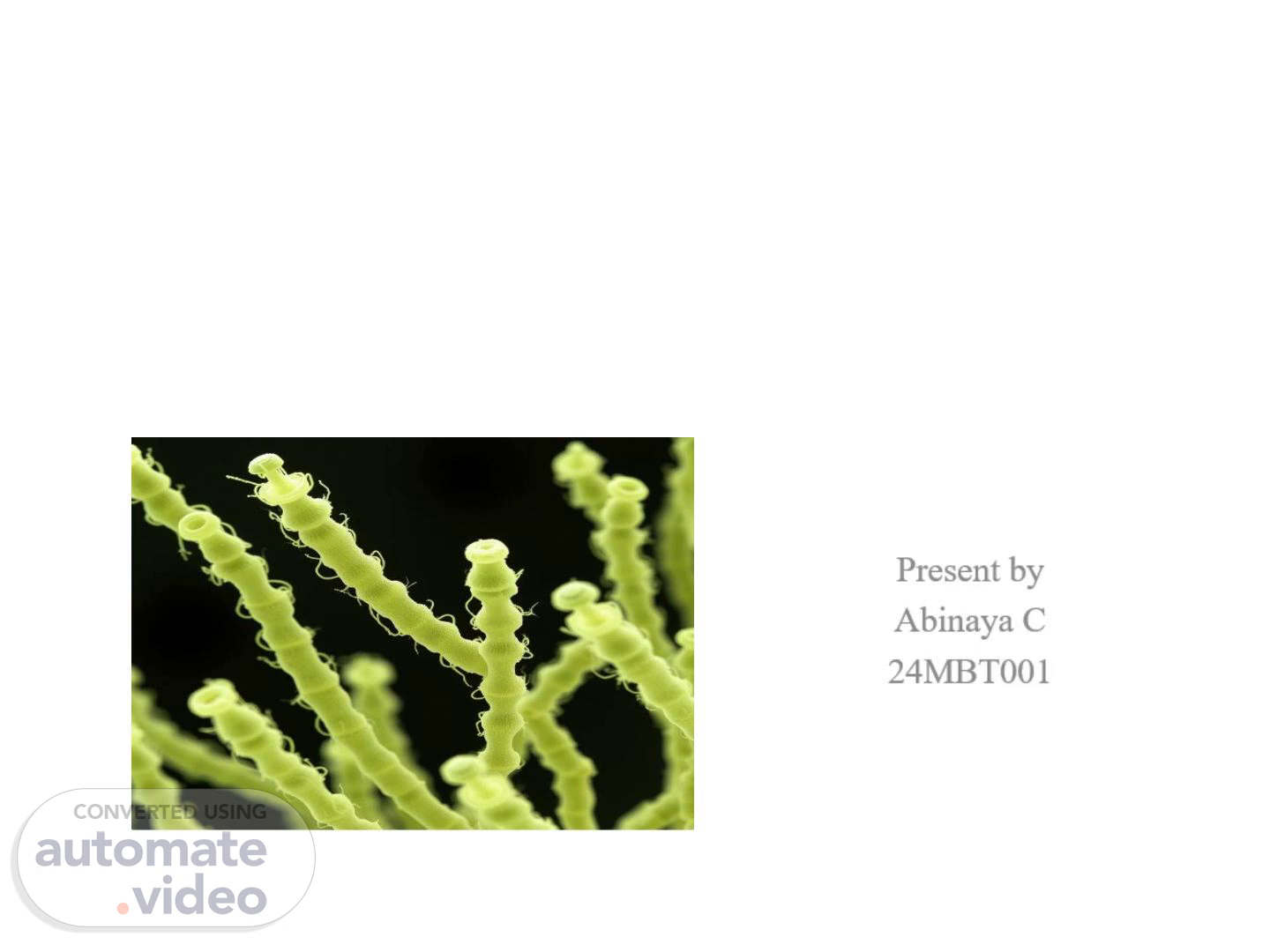
PLANT BIOTECHNOLOGY Agrobacterium tumefaciens basic formation of tumour
Scene 1 (0s)
PLANT BIOTECHNOLOGY Agrobacterium tumefaciens basic formation of tumour.
Scene 2 (8s)
INTRODUCTION. Agrobacterium tumefaciens causes tumor in plants i.e. crown gall disease. The tumor formation results from the transfer of particular set of particular set of Ti - plasmid into plant chromosome. Tumor formation occur by transfer of small segment of Ti- plamid. Small part of Ti- plasmid (T- DNA) is transferred into plant genome..
Scene 3 (26s)
Agrobacterium INFECTED PLANT Agrobacterium transfer DNA between itself and plants Tumour-like growth 400b acterium tumeqa.
Scene 4 (34s)
Agrobacterium. Agrobacterium timefaciens- Infects damaged plant tissue which is induced plant tumor i.e. crown gall. Crown gall occurs when bacterium releases Ti- plasmid into cytoplasm..
Scene 6 (53s)
Ti- Plasmid. Extra chromosomal, double stranded circular DNA molecule. Vir genes helps in transfer of T-DNA into plant cell. Small segment of Ti- plasmid transferred to host plant & integrated with genome i.e. T- DNA. Agrobacterium induced tumors synthesize variety of unusual compounds- opines..
Scene 7 (1m 11s)
OPINES. Agrobacterium induce tumors synthesized variety of unusual compounds called opines. TYPES OF OPINES: Octapine Nopaline Agropine These opines are catabolized by agrobacterium to obtain energy..
Scene 8 (1m 23s)
How Ti- PLASMID cause a disease?. Chromosome T-DNA Ti plasmid - Agrobacterium tumefaciens (a) (b) Chromosomal DNA vt)NA Transformed plant cell (c) Crown gall (d).
Scene 9 (1m 32s)
Agrobacterium is a bacterium that grows in association with plant roots. The bacterium carried a naturally- occuring plasmid, Ti that contains a gene region called T-DNA. In crown gall disease, the T-DNA region is randomly integrated into the host plant chromosomal DNA: this causes the formation of tumor- like growths at the base of the plant. The Ti- plasmid thus behaves like a natural vector, and can be used to genetically engineer plants..
Scene 10 (1m 54s)
Agrobacterium- mediated transformation process. Wounded plant cea produces signal molecules 2 Signal molecules are recognized by the bacterial receptors 4 Activated Vir proteins process the ss 5 VrA,ViG2 3 Agrobacterium attaches to the plant cell region Vir01,vr02 I-ONA V*D2 + T-srand V*E2 8 Random TONA integration in the plant genome 7 Assembly Of the mature T-complex and nuclear import Formation Of the irnmature T •complex 4 6 TONA transfer Expression Of the 9 bacterial genes and synthesis Of bacterial proteins Agrobacterium cell Opines. can only be rnotabolized by Agrobacterium Auxin and cytokinin lead to tumor formation in host paant Susceptible host plant cell.
Scene 11 (2m 14s)
Signal molecules released from wounded plant tissues, Are recognized by the bacteria Vir A/ Vir G2- component signal transduction system. Following a successful attachment to a healthy susceptible plant cells. Activation of the Vir genes leads to the Vir D1/ VirD2 border- specific endonucleases targeting the T-DNA border sequences. They process the T-DNA the Ti plasmid and release a single stranded T-DNA (ssT-strand) through a strand- replacement mechanism . (Induction of vir genes). Subsequently, the VirD2 protein covalently attaches in a polar manner to the 5’ end of the T-strand production ( forming the so called “immature T- complex”)..
Scene 12 (2m 42s)
The VirD2/ T- strand conjugate is then transferred to the plant cytoplasm via a type IV secretion system ( T4SS) formed by 11 VirB proteins and VirD4. Through this secretion apparatus, localised predominantly at the pole of bacteria, the T-DNA containing package is injected into the plant cell and passes through three members, the plant cell wall and cellular spaces, other bacterial virulence proteins (VirE2, VirE3, VirF and VirD5), that serve the transformation process in the plant. It has been suggested that VirD2 and VirE2 protect the ssT-strand (single stranded T-strand) from exonucleolytic attack inside the plant cytoplasm by attaching to its 5’ end..
Scene 13 (3m 11s)
Following sucessful integration the expression of T-DNA encoded genes leads to synthesis of bacterial proteins. Promoting tumour formation. Advantages of Agrobacterium- mediated transformation: High rate of incoporation. Often simple integration pattern. Different from direct gene transfer..
Scene 14 (3m 26s)
Vir FUNCTIONS. GENE/ PROTEIN FUNCTION Vir A Senses plant signal. VirG/ G2 Activates Vir gene expression. Vir D1 DNA unwinding near T-DNA borders. Vir D2 Nicking T-DNA borders, stays bound to strand. Vir B T-DNA/ protein transfer machinery (T4SS). Vir D4 Couples T- strand to Vir B system. Vir E2 Binds T-strand, nuclear import. Vir E3 Co-activator, assists nuclear import. Vir F Degrades VirE2/ VIP1 for uncoating. Vir D5 Possible transriptional effector..
Scene 15 (3m 50s)
REFRENCE. Biology and application in genetic engineering gsc advanced research and reviews 2024. Physiological and molecular plant pathology, agrobacterium tumefaciens 2011 Lacroix B, Loyter A, Citovsky V Association of agrobacterium T-DNA-protein complex with plant nucleosomes15429-34 Agrobacterium tumefaciens: a Transformative Agent for Plant Biotechnology Frontiers in Plant Science2023https://pmc.ncbi.nlm.nih.gov/articles/PMC10127608/.
Scene 16 (4m 10s)
[image] nyfepmu6).